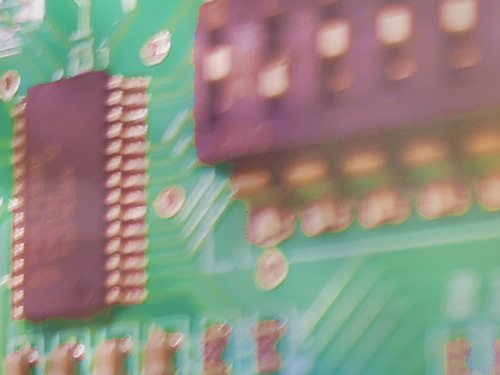Combatting the Component Shortage Crisis
Roland Martin-Bessy, our Operations Director speaks about the global component shortage crisis.
Roland Martin-Bessy, our Operations Director speaks about the global component shortage crisis.
In line with the demands of modern society, the technology around us is simultaneously evolving and getting smaller. Cutting-edge developments, from foldable smart phones to driverless cars, are occurring across all sectors, including in life safety production and installation.
The increasing number of products being made smaller is bringing with it a new demand for micro-electrical components. Manufacturers are having to be more innovative and investment-ready to find new processes to cope with the intricacies of micro technology; upgrading their lines and production machinery as a result.
So, what does this mean for manufacturers of life safety systems and those who install them?
COMPONENT OBSOLESENCE
Advanced detectors and sensors, such as the ones we produce here at Hochiki Europe, are not as space-hungry as other consumer products which means there is not an essential requirement to decrease their size. However, the implications of not adapting these life safety products to work with smaller components could result in serious issues.
As components are manufactured to increasingly smaller sizes (to meet demand for industries where ‘smaller equals better’), older, bigger variants become redundant and are phased out of manufacture. This is commonly known as ‘component obsolescence’. To address and forward plan against this, we use various software tools and data analysis that accurately track changes in component manufacturing. It is the responsibly of our R&D Team to take on this challenge of predicting any industry changes and adapt our business processes accordingly. In doing so, we are constantly ahead of any production or supply trends, meaning the business can operate as normal.
THE RIPPLE EFFECT
If not managed correctly, the effects of component shortages can be felt through an entire supply chain. Having a consistent supply of correct components to hand will determine the level of stock a manufacturer can continually produce, yet with increased component obsolescence, these levels are at risk if not managed properly. Manufacturers then run the risk of not fulfilling quotas promised to various stockists, causing potential disruption from the supplier through to the end user. Additionally, with limited stock available, installers may find themselves without the life safety solutions needed to complete a project, which could force them to turn down work.
The risk at each level of the supply chain needs to be carefully assessed and communicated so that all parties can continue as normal. Maintaining a constant and reliable route to market requires manufactures to have a wider, more forward-thinking approach to the supplier relationship. We at Hochiki Europe are huge believers in collaboration and clear communication with our suppliers to guarantee the prioritisation of our orders. Planning far enough in advance to have surplus stock ensures we constantly maintain a steady stream of production and can stay ahead of any component shortages.
MANUFACTURING FOR THE FUTURE
The threat posed by component shortages now encompasses a large part of my role as Operations Director. Research into upcoming supplier developments, ensuring stock levels are maintained and equipping machinery to deal with ever smaller components requires significant investment. That is why we have recently invested hundreds of thousands of pounds to improve our manufacturing capabilities.
Being in an ever-evolving industry, agility is imperative. Accounting for such investments into our business plan factors in room for essential developments, allowing Hochiki Europe to have continued growth, long into the future.
